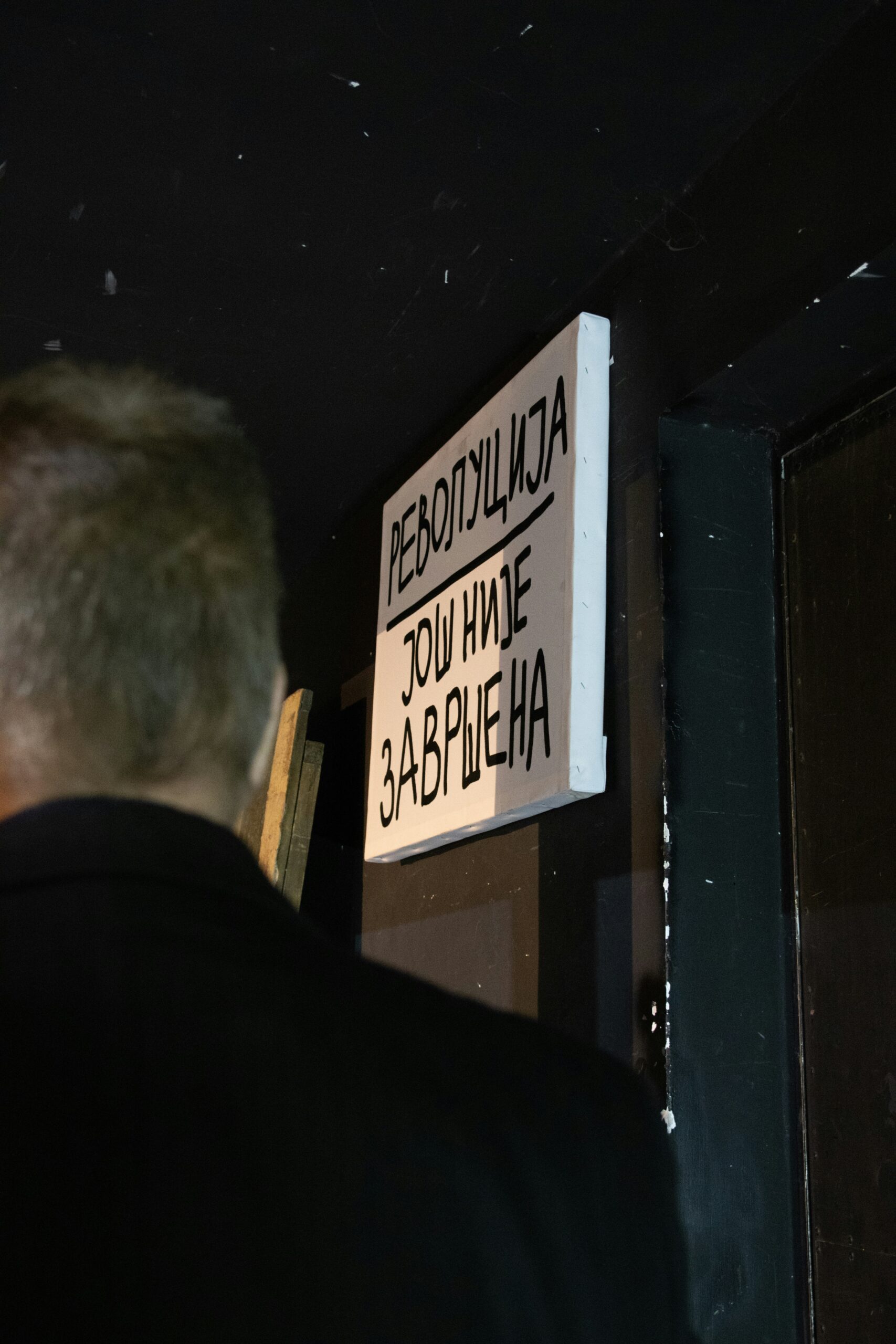Introduction to the Viral Claim
Recently, social media and various online platforms were abuzz with the news of former U.S. President Jimmy Carter’s alleged passing on July 23. This claim quickly gained traction, causing widespread concern and prompting numerous tributes and condolences from individuals and public figures alike. The core of this misinformation stemmed from a fabricated letter purportedly from the ‘Office of Jimmy Carter’.
The letter, which appeared convincingly authentic to many, was shared extensively across different social media networks. It bore official-looking letterhead and carried a solemn tone, adding to its perceived credibility. However, upon closer examination, it became evident that the letter was a deliberate hoax. Despite this, the initial public reaction was one of shock and sorrow, as many people believed the news to be true.
The rapid dissemination of the false claim highlights the power and reach of digital media, as well as the ease with which misinformation can spread. In a matter of hours, the fake announcement had reached thousands, if not millions, of users, demonstrating the potential for viral content to influence public perception. The incident underscores the importance of verifying sources and exercising caution before accepting and sharing news, especially when it pertains to significant public figures like Jimmy Carter.
As the story unfolded, official representatives from the Carter Center and the former President’s family promptly issued statements to debunk the false claim and reassure the public of Jimmy Carter’s well-being. These efforts were crucial in curbing the spread of misinformation and restoring accurate information to the public discourse. Nonetheless, the incident serves as a stark reminder of the challenges posed by digital misinformation in the contemporary media landscape.
Examining the Alleged Source: The ‘Office of Jimmy Carter’ Letter
The purported letter from the ‘Office of Jimmy Carter’ claiming his passing on July 23 has raised significant questions regarding its authenticity. A thorough examination of its content and format reveals several inconsistencies that cast doubt on its legitimacy. Firstly, the letter’s tone and language are markedly different from known official communications from the Carter Center. The phrasing is less formal and lacks the professional polish typically associated with such documents.
Additionally, the format of the letter deviates from the standard templates used by the Carter Center. Official letters from the Carter Center usually feature a consistent header, logo placement, and contact information, all of which are meticulously designed to maintain a uniform appearance. In contrast, the questioned letter displays irregularities in these areas, such as a misplaced header and an incorrect logo size, suggesting it may not have originated from the official source.
Another critical aspect to consider is the signature at the end of the letter. Authentic letters from the Carter Center are signed by known representatives or by President Carter himself. However, the signature on the alleged letter appears to be a crude imitation, lacking the distinct handwriting characteristics of previous genuine signatures. This discrepancy is a significant red flag, indicating the possibility of forgery.
Furthermore, a comparison of this letter with previous official announcements reveals a lack of coherence. The Carter Center has a well-documented history of clear and concise communications, especially concerning significant events. The alleged letter, however, contains vague statements and grammatical errors that are uncharacteristic of the organization’s established communication style.
In conclusion, the inconsistencies in content, format, and signature, along with the deviation from the Carter Center’s typical communication style, strongly suggest that the letter claiming Jimmy Carter’s passing is fabricated. These discrepancies highlight the importance of verifying the authenticity of such documents before accepting them as truth.
Official Statements from the Carter Center
In response to the fabricated letter claiming Jimmy Carter’s passing on July 23, the Carter Center promptly issued an official statement refuting the false information. The Carter Center clarified that Jimmy Carter, the 39th President of the United States, is alive and well. Their statement emphasized the importance of verifying information through credible sources before spreading unverified news, especially concerning sensitive matters such as someone’s well-being.
In their official communication, the Carter Center stated, “It has come to our attention that a letter purportedly from the ‘Office of Jimmy Carter’ regarding his passing is circulating. We assure you, President Carter is in good health. Any claims to the contrary are entirely false.” This unequivocal declaration aims to dispel any doubts and reassure the public of Jimmy Carter’s current status.
Moreover, the Carter Center has taken steps to address the misinformation by liaising with social media platforms and news outlets to flag and remove the false claims. They have also encouraged the public to report any suspicious posts or communications that might contribute to the spread of such misinformation. The Center’s proactive approach highlights their commitment to maintaining the integrity of information about President Carter.
Additionally, the Carter Center has provided updates through their official social media accounts, reiterating that any news regarding President Carter’s health will be communicated through their verified channels. They urge the public to rely on these verified sources for accurate information. This practice not only counters the current misinformation but also establishes a clear protocol for future communications.
Through these efforts, the Carter Center demonstrates its dedication to transparency and accuracy, ensuring that false claims are swiftly and effectively addressed. By relying on official statements and verified updates, the public can remain accurately informed about the health and well-being of former President Jimmy Carter.
Previous Incidents of Misinformation Regarding Public Figures
Instances of misinformation about the health or death of public figures are not uncommon. Over the years, numerous celebrities, politicians, and other well-known individuals have fallen victim to such fabrications. These false reports often spread rapidly, fueled by social media and the instantaneous nature of digital communication. For example, in 2016, a hoax claiming that actor Sylvester Stallone had died gained significant traction online, causing widespread concern until it was debunked. Similarly, former U.S. President George H.W. Bush was erroneously reported dead multiple times before his actual passing in 2018.
The motives behind these fabrications can vary. Some individuals create and disseminate false information for attention or to drive traffic to their websites, capitalizing on the public’s interest in the lives of famous individuals. Others may have more malicious intentions, seeking to create chaos, manipulate stock markets, or even influence political landscapes. Regardless of the intent, the impact of such misinformation is significant. It can cause undue stress and grief for the families and friends of the individuals involved, while also misleading the public and tarnishing the reputations of both the subjects and the sources that inadvertently spread the false information.
Moreover, the rapid spread of misinformation about public figures underscores the challenges faced by the media and the public in discerning credible news from fabrications. It emphasizes the need for critical thinking and verification before accepting and sharing information, especially when it concerns sensitive topics like the health or death of individuals. Trusted news organizations and fact-checking entities play a crucial role in countering these false reports, but the responsibility also lies with each individual to approach such news with skepticism and seek confirmation from reliable sources.
The Role of Social Media in Spreading False Information
In the digital age, social media platforms have become powerful tools for the dissemination of information. However, their unprecedented reach and influence also make them fertile ground for the spread of false information. The fabricated letter claiming the passing of Jimmy Carter on July 23 serves as a pertinent example of how quickly misinformation can circulate online. The mechanics of virality play a significant role in this phenomenon, often propelled by the innate human tendency to share sensational or emotionally charged content. The speed at which this false claim spread underscores the complex interplay between social media algorithms and user behavior.
Algorithms on platforms such as Facebook, Twitter, and Instagram are designed to prioritize content that generates high engagement. Unfortunately, this often means that sensational or misleading information receives more prominence and visibility than factual content. As users engage with sensational posts by liking, sharing, or commenting, the algorithms further amplify the reach of such content, creating a feedback loop that perpetuates misinformation.
Moreover, the anonymity and ease of content creation on social media platforms contribute to the rapid spread of false information. Users can create and share misleading content with minimal accountability, making it challenging to trace the origins of a fabricated story. This anonymity, combined with the sheer volume of information circulating on these platforms, makes it difficult for users to discern credible sources from unreliable ones.
The responsibility of social media companies in curbing misinformation is a topic of ongoing debate. While these platforms have implemented measures such as fact-checking labels, content moderation, and user reporting systems, the effectiveness of these initiatives remains limited. The balance between maintaining free speech and preventing the spread of false information is a delicate one, and social media companies must continually adapt their strategies to address this evolving challenge.
In conclusion, the role of social media in spreading false information is multifaceted, involving the dynamics of virality, algorithmic amplification, and the responsibilities of social media companies. Addressing this issue requires a concerted effort from both platform providers and users to foster a digital environment where accurate information prevails over sensationalism.
Fact-Checking Resources and Tools
In an era where misinformation spreads rapidly, it is crucial to have reliable methods for verifying the authenticity of news and claims. Having access to dependable fact-checking resources can help individuals discern credible sources from fabricated ones. Here, we introduce some reputable fact-checking websites and tools that assist in distinguishing fact from fiction.
One of the most well-regarded resources is Snopes, known for its comprehensive investigations into a wide range of topics. Whether it’s a viral social media post or a dubious news article, Snopes provides detailed analyses and evidence to confirm or debunk claims. Another essential tool is FactCheck.org, a project of the Annenberg Public Policy Center, which primarily focuses on political claims but also covers other areas of public interest.
PolitiFact is another valuable resource, especially for those looking to verify statements made by politicians. It uses a “Truth-O-Meter” rating system to evaluate the accuracy of various claims. Additionally, the International Fact-Checking Network (IFCN) operates a code of principles to promote best practices in fact-checking, ensuring that the information provided by its members is transparent and reliable.
Beyond these websites, tools such as Google Fact Check Explorer allow users to search for fact checks related to specific topics. This tool aggregates fact-checking content from various reputable sources, making it easier to cross-reference information. Media Bias/Fact Check is another useful resource that provides assessments of the credibility and bias of numerous media outlets, helping readers identify potential biases in the news they consume.
To effectively discern credible sources, readers should also be mindful of a few key tips: always check the author’s credentials, verify the publication date, look for citations and references, and be cautious of sensationalist headlines. By utilizing these fact-checking resources and tools, individuals can better navigate the complex landscape of information in today’s digital age.
The Importance of Media Literacy
In today’s digital age, media literacy has become an essential skill for navigating the vast and complex information landscape. With the proliferation of social media platforms and the internet’s accessibility, individuals are constantly bombarded with an overwhelming amount of information, much of which can be misleading or outright false. Media literacy equips individuals with the ability to critically evaluate the information they encounter, discern credible sources, and make informed decisions based on accurate data.
One of the key components of media literacy is the ability to recognize false claims and misinformation. This skill is crucial in preventing the spread of inaccurate information that can have serious consequences. For instance, the recent fabricated letter claiming the passing of Jimmy Carter underscores the need for individuals to verify the authenticity of information before sharing it. By developing a skeptical mindset and questioning the validity of sources, individuals can avoid falling prey to hoaxes and fake news.
Educating oneself on media literacy involves several strategies. Firstly, understanding the nature of different media sources and their potential biases is imperative. Not all sources are created equal, and recognizing the difference between reputable news organizations and unreliable websites is a fundamental step. Secondly, cross-referencing information from multiple credible sources can help ascertain the accuracy of a claim. If a piece of news is reported by several well-regarded outlets, it is more likely to be true.
Additionally, individuals should take advantage of fact-checking websites and tools that can help verify the authenticity of information. Websites such as Snopes, FactCheck.org, and PolitiFact provide valuable resources for debunking false claims. Moreover, understanding the basic principles of source evaluation, such as checking the author’s credentials and the publication date, can further enhance one’s media literacy skills.
Ultimately, media literacy empowers individuals to navigate the digital information landscape effectively and responsibly. By fostering critical thinking and encouraging a proactive approach to information consumption, society can combat the spread of misinformation and build a more informed public.
Conclusion: Staying Informed and Vigilant
In the age of rapid information dissemination, it is imperative to maintain a vigilant and informed stance when encountering news, particularly those concerning public figures like former President Jimmy Carter. The fabricated letter claiming his passing on July 23 is a stark reminder of the prevalence of misinformation. This incident underscores the critical need for individuals to verify information from credible sources before sharing it with others.
As media consumers, we bear the responsibility of contributing to a culture that values truth and accuracy. By taking proactive steps to fact-check and scrutinize the authenticity of information, we can mitigate the spread of falsehoods. Engaging with reliable news outlets, cross-referencing facts, and employing critical thinking are essential practices in this endeavor.
Moreover, fostering a community that prioritizes evidence-based information enhances our collective ability to discern truth from fiction. Encouraging discussions around media literacy and promoting awareness about the mechanisms of misinformation can fortify our defenses against deceptive narratives.
Ultimately, the effort to stay informed and vigilant is a continuous one. By remaining committed to these principles, we can uphold the integrity of our information ecosystem and ensure that truth prevails over falsehood.


